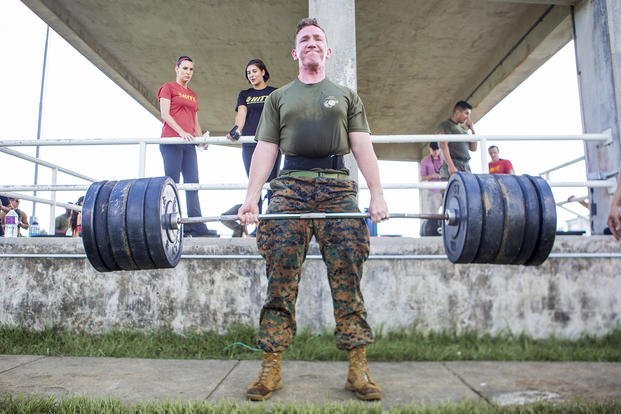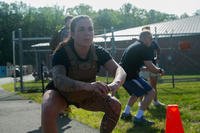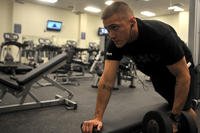If you're into a regular daily fitness regimen, you probably have been through some ups and downs throughout your fitness journey. If fitness is a habit, a lifestyle, you know that it's a journey, not a destination, as the saying goes.
Some of those ups and downs may have been overuse injuries, traumatic injuries or simply lags in performance where you see little to no improvement at times. Avoiding plateaus and injury is a delicate balance of experience, knowing your body and following some rules. Also, you must learn as you age that the rules need to change as your 45-year-old body is not the same as your 25-year-old self.
The section below discusses several rules you can follow in order to avoid some setbacks, aches and pains that many endure throughout the years of training. No matter what your age, these tips can help you perform better and hopefully avoid lost training or work days -- especially if you are in the tactical professions.
Too much, too soon. This is the number one way people hurt themselves training, and unfortunately, it often comes with those beginning a path on the fitness journey. After running too many miles, lifting too much weight, doing too many repetitions of calisthenics, these beginner (or advanced) exercisers can be in pain for several days if they are lucky. If just sore muscles, you will be OK in a few days. However, if you pulled a muscle, inflamed a tendon (tendinitis) or suffered a stress fracture, you can be done with that activity for months.
Too fast. Many people simply move too fast with doing repetitions of calisthenics, lifting weights or other resistance-training exercises. Not having a smooth push and pull of your body weight or other resistance can lead to muscle pulls, especially in the lower back and hamstrings, depending on the movement.
But you likewise can pull a chest, shoulder or arm muscle doing pull-ups too fast (kipping), or even push-ups and dips. Add weight to those exercises and the likelihood of increasing the chances for injury go up with the weight. Slow and steady is best. Make the repetitions a few seconds on the eccentric and a few seconds on the concentric movements -- in other words, during the down and up movements of a pull-up, respectively.
Another element of "too fast" is running. Throughout my fitness history, I can pinpoint a few times I was injured by simply trying to run too fast. After 30 to 35, I learned my definition for sprinting is different than the 20-year-old version of me. Even after being fully warmed up and ready to run fast, 100% sprinting is more of an 80% full effort. Otherwise, I pull hamstring, groins, calves or hip flexors.
Too much weight. This happens often, especially for the men and women who love to lift and lift heavy. Very similar to running at 100%, it is not a bad idea to leave that last rep on the ground sometimes. For exercises like deadlift, sometimes you can get the last repetition of a set, and sometimes it needs to stay on the ground. However, it takes time to learn this about your body and when to push or pull back. Once again, fitness is a journey of exploration -- never a destination.
Another side of too much weight is body weight. If you are seriously overweight, doing anything is more difficult. Walking is challenging but doable. Non-impact activities are strongly recommended until you start to get into a normal body-weight range; running or walking impacts the knees, hips, back and other joints, bones and soft tissues. That can be painful or result in long-term injury. Keep moving more than you normally do and eating better (portion control) than you do, and you will find that combination is the basics to building the foundation you need to become a healthy weight again.
Ever notice people who live well into their 90s are usually smaller, lighter and still highly active? You rarely see heavier people make it that far. Plus, maintaining a healthy body weight can keep you active through your senior years and help with many typical issues, including diabetes, heart disease, high blood pressure and high cholesterol.
Not enough stretching. Some other things to consider are mobility and flexibility. Too many people skip a dynamic stretch warmup before a workout or fail to stretch during the cooldown phase.
Adding a section of time into your workouts for stretching or dedicating a workout day to mobility through focused work or a yoga class is ideal for adding some pain-removing activity. Be careful because many people can pull muscles stretching if you stretch cold, bounce or push too hard.
Knowing that a stretch should not hurt but can be uncomfortable is sometimes a fine line to balance. Practice and learn where that line is. You will be amazed at how the results of a few weeks of stretching makes you feel, even if done 10 minutes before going to bed.
Poor posture, form or technique. These can be the root of all your pain and injury. Whether you are lifting, running, swimming or doing calisthenics, posture, form and technique are critical to you exercising regularly and staying away from injury. Make sure any gear you are wearing fits properly (shoes, for instance), and you learn some technique basics for the above activities or especially any activities you are trying for the first time. Maybe get a trainer or watch proper-form videos on lifting, running, swimming, etc. Practice and progress logically with the right posture, form and technique, and you will see a pain-free journey into this fitness world.
Stew Smith is a former Navy SEAL and fitness author certified as a Strength and Conditioning Specialist (CSCS) with the National Strength and Conditioning Association. Visit his Fitness eBook store if you’re looking to start a workout program to create a healthy lifestyle. Send your fitness questions to stew@stewsmith.com.
Want to Learn More About Military Life?
Whether you're thinking of joining the military, looking for fitness and basic training tips, or keeping up with military life and benefits, Military.com has you covered. Subscribe to Military.com to have military news, updates and resources delivered directly to your inbox.
















